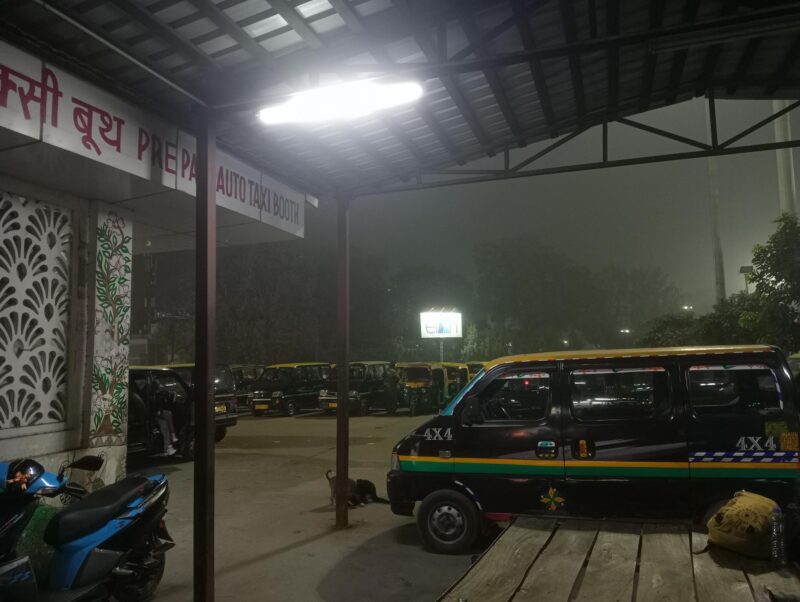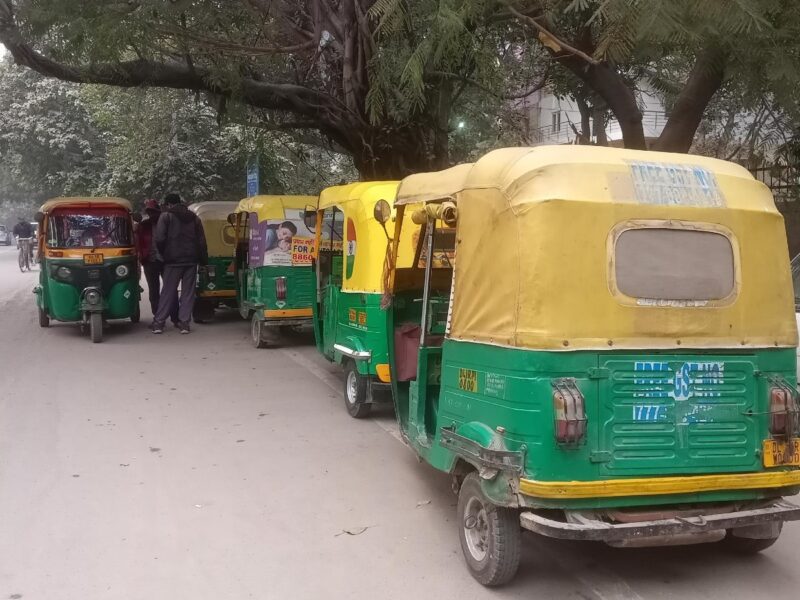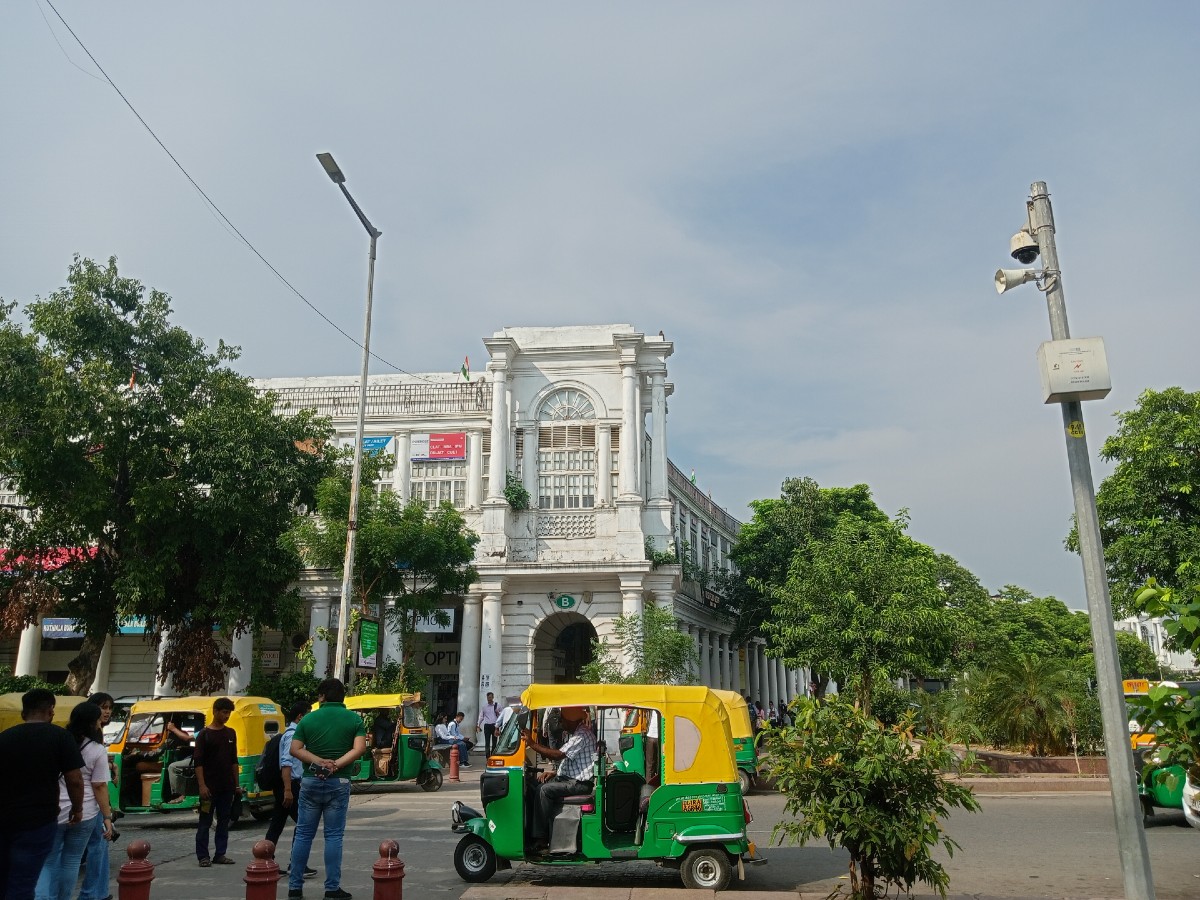On January 11, Delhi government announced a fare hike for autorickshaws and taxis in the Capital but the decision has not been received well by the drivers of the vehicles as they see potential loss of customers.
According to the new fares, the metre down charge (minimum fare) for the initial 1.5 kilometres for autorickshaws has been increased from Rs 25 to Rs 30, while the per kilometre charge afterwards has been hiked from Rs 9.50 to Rs 11.
The revised rates came into force from January 9.
There has been no increase in waiting charges and night charges for autorickshaws, while the charges for extra luggage have been hiked from Rs 7.50 to Rs 10.
For taxis, the charge for the first kilometre, which was Rs 25 for both AC and non-AC types, will go up to Rs 40. The per kilometre charge after metre down will increase to Rs 17 for non-AC and Rs 20 for AC taxis. Before the revision, the charges were Rs 14 for non-AC and Rs 16 for AC.
Call for cut in CNG prices
The taxi and auto drivers, along with their unions, have however expressed a similar demand for reduction in CNG price, which has seen an 80% hike in less than two years.
“Instead of increasing the fare of autos, if the government had reduced the price of CNG then that would have helped us. This move (hike in fare) will only amount to losses for us,” says Dinesh Kesari, who drives an autorickshaw from a stand near New Friends Colony.
CNG prices in the National Capital Territory of Delhi have gone up by a record Rs 22.60 per kg in 14 installments since March 7. CNG now costs Rs 78.61 per kg in Delhi.
Since April 2021, CNG prices have increased by Rs 35.21 per kg or by 80%. The CNG price on April 1, 2021 was Rs 43.40 per kg.
“Right now, we pay at least Rs 400 for gas on a decent day against a total income of Rs 1200 if we get 7-8 rides. This pinches a hole in our pockets because if we have to pay Rs 400 rent per day for the auto and Rs 400 for the gas, then how much are we taking home in a day? Barely Rs 400. This, we are estimating,will be on a day of decent business. On days we get fewer rides, it will be worse,” Dinesh adds.
An auto driver has to pay a minimum of Rs 400 and maximum Rs 500 a day as for the vehicle if he doesn’t own it.
Taxi drivers have a similar demand. They have called for subsidies on CNG. “The latest price hike is like oonth ke muh mein jeera (half a mouthful for a starving man). This hike means nothing. We have been demanding a hike in fares for the past 10 years and ideally there should have been an increase by Rs 30 per kilometre to reduce the losses we are facing. They have announced a hike of just Rs 3,” says the Pradhan of the New Delhi Railway Station Taxi Union.
“Infact, this way we will lose more potential travellers, who would book private services soon after getting off the train,” he adds.

Unlike autos, taxis in the national capital are only allowed from station to station or airport to station and vice versa. This has widened the margin of losses for taxi drivers.
While the last revision in the autorickshaw fares happened in 2020, the one for taxis, both economy and premium, happened in 2013.
A kilogram of CNG gives a mileage of 15 kilometres for taxis on a day of less traffic.Autos get around 25 km.
A 13-member committee was formed in May last year to review and recommend the fare in the wake of increasing rates of CNG, cost and maintenance of autorickshaws and taxis, and various other issues, affecting the drivers’ net earnings.
“Auto and taxi drivers have been incurring high expenses due to hikes in CNG prices in the last few months. The new fares will help them to cope with the rising prices. I would like to ensure all drivers that the Arvind Kejriwal government is standing with them and will keep supporting them in the best possible manner,” Kailash Gahlot, the Delhi Transport minister, had said.
Surviving on ‘nothing’
Mohammad Eijaz has been driving a taxi for the past 19 years in Delhi. He used to live on rent in a one-room set-up with his family of four near Panchkuian Marg till 2018. He was forced to send his family back home in Bihar’s Samastipur due to “unaffordable expenses” in Delhi and now spends the night inside his taxi.
“My brother and I live inside our taxis and keep our belongings like clothes at a dhobiwala (washerman) and a few other stuff at the [taxi drivers’] resting place at the station. We use the public bathrooms and sleep inside our taxis to save some penny from the rent. There are many who survive in Delhi like this,” he says.
The auto drivers say that they live off each other’s money to survive.
“We lend and borrow from each other to take home money. Kyunki roti toh todni hai agar jeena hai to (because we need to break bread to survive) so we help each other,” says Tej Singh.
They are making a desperate appeal to the government about their grievance around loans.
Tej continues, “Banks do not offer loans for autorickshaws, so if we have to buy one, we have to apply for private loans.The lenders are exploitative. An auto costs around Rs 7-8 lakh. Nowadays, even second-hand autos cost Rs 5 lakh. Even if we pay a down payment of Rs 2 lakh and the rest by the medium of a loan, in case we are unable to pay the interest for one month, the lending party will take back the auto and all our money will go waste. We are poor, so how do we afford that.”
The autodrivers cited this as the primary reason to rent a vehicle rather than buy one even if they have to pay Rs 400 a day.
Besides gas and rent, there are miscellaneous expenditure as well. Taxi drivers claimed that they have seen 25% to 30% rise in prices of spare parts.

“What used to be Rs 100 a year ago is Rs 125 now. A rear tyre used to cost Rs 2,500 and that has gone up to Rs 3,600 today. But our income has come down drastically,” says Rajkumar.
The middle lane on the main road is allotted to autorickshaws, according to Delhi’s traffic rules.
“But two-wheelers barge in from anywhere and there is no proper demarcation for that. We have a bus on the left and a four-wheeler on the right, but two-wheelers on all the sides. The demarcation gets disrupted. This further hurts our interests because when we collide with a motorcycle and claim insurance money, we are denied one because we are told that we were not in our lane,” saysTej.
Fresh apprehensions
Taxi and auto drivers lament that they have been running losses for years now. “Mushkil se agar aajkal 5 trip mil jayetoh din achha jaata hai (we consider it a good day even if we get 5 trips in a day). Before the price hike, customers fought with us over charges and now that will increase and we will lose more commuters,” says Rana, an auto driver at the Central Market in Lajpat Nagar.
The commuters Patriot spoke to expressed the same sentiment.
“Price of everything else is rising. But our salaries don’t increase. Earlier, we would take autos from our nearest stands to the metro or the market but now we have to stop even that and wait for Uber autos or two-wheelers. It is getting so tough to do basic things these days,” says Sahej, who was there at the market for shopping.
“Not like we always took these autos. Nowadays, most of us take Uber and Ola for various reasons, including the GPS system, and avail stand autos rarely. Now, we will avoid that even more,” Sahej adds.
On the other hand, students say that the price hike will, in fact, have an impact on them. “Right now, due to winter, we don’t travel much but usually we take autos outside the gate to go to nearby places because the guards do not always allow Uber and Ola bikes or autos inside the campus,” says Damini, a first year B.A. Honours (Russian) student.
“In any case, auto drivers refuse to turn on the metre and now they will demand more money from us based on the price hike,” she adds.
Tough competition
Private app-based travel services such as Uber and Ola in Delhi have dealt a severe blow to Capital’s auto and taxi drivers.
“They offer cheaper rates so people want to avail them. We don’t blame them because it is obvious that people will look out for a window to save money. These private services gain by exploiting and depriving drivers they have employed so we don’t even want to switch to that side. It’s like a double whammy for us,” says Eijaz, who briefly drove an Uber taxi and was “ripped off”.
“Atleast here we are fully aware of what we are earning and how much we are spending on the vehicle. One cannot fully depend on these Uber and Ola services as a driver. This can be part-time but not the only job,” he adds.

For auto drivers, it is bike services that have cut their income. “Earlier, at least we had customers who needed to reach their destination sooner so they preferred autos over taxis. Now, they have switched to Uber/Ola bikes because they are faster and cheaper options. Even if we want to, we cannot offer cheap rates like that because anyway we are incurring severe losses,” says Rana.
Seasonal losses
For autodrivers, winter in Delhi is torturous not for the intensity of the cold, but due to “no commuters”.
“No one wants to take an auto during winter because of the cold so we run on losses for two months at least. We have to pay rent for the vehicle so we cannot even switch to some other business,” says Dinesh.
A decent day fetches auto-drivers three rides in 10 hours. “Yes, we don’t have to shell out much on gas because of this but the rent does not drop. Besides, there are daily expenses to be met at home. We usually survive on each other’s mercy nowadays and little bit of what we save from the summer months to fill in for winter,” he adds.
On the contrary, taxi drivers see little to no travellers during the span of July-August-September and maximum in winter.
“Usually, people travel less in those months because children have [term] exams and it rains so footfall in railway stations drops manifold. If there are travellers in stations then there are no takers for taxis [which mostly operate from station to station or airport to station]. Simple equation. Whereas, in winter, it is comfortable to travel. Besides, Delhi is a transit for many of those travelling to hill stations. So, we get to make some money during these two months,” says Rajkumar.





